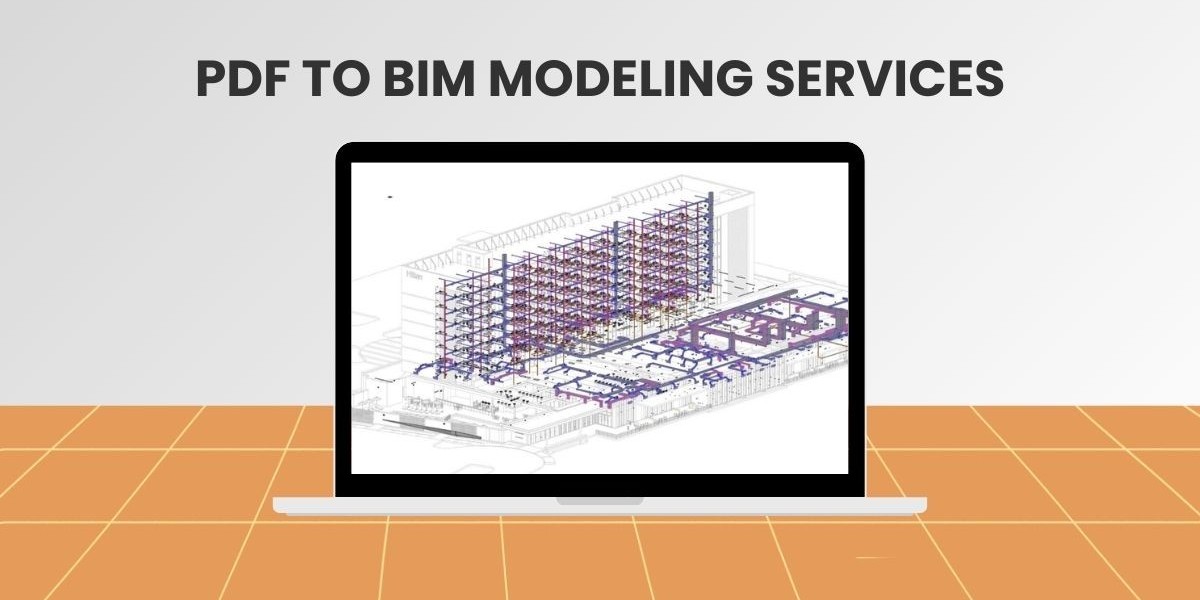In the ever-evolving world of architecture, engineering, and construction (AEC), the demand for precise digital models is growing rapidly. Traditional 2D drawings and PDF files often lack the depth and coordination needed for modern construction projects. This is where PDF to BIM Modeling Services come into play, offering a reliable solution to convert legacy drawings into intelligent Building Information Models (BIM). By transforming simple PDFs into 3D BIM models, companies can achieve better accuracy, coordination, and efficiency across all stages of a project.
What is PDF to BIM Modeling?
PDF to BIM modeling refers to the process of converting 2D PDF drawings, layouts, and design documents into fully functional 3D BIM models using platforms like Autodesk Revit. These models are not just visual representations; they are data-rich, enabling improved collaboration and informed decision-making.
Many construction projects rely on older documents that exist only as scanned PDFs or CAD exports. With PDF to BIM services, these documents are digitally upgraded to align with current industry practices, supporting design development, construction planning, and facility management.
Why Choose PDF to BIM Modeling Services?
Accuracy and Clarity
Converting PDFs into BIM models eliminates ambiguity in design. The 3D environment provides clear visualization and ensures that dimensions, annotations, and details are interpreted correctly.Seamless Collaboration
BIM models serve as a central repository of information that architects, engineers, contractors, and stakeholders can access in real time. This reduces miscommunication and enhances coordination.Cost and Time Savings
Reducing design errors and minimizing rework lowers overall project costs. Faster design approvals and better planning also save valuable time during execution.Legacy Drawing Modernization
Many organizations have archives of PDF files from previous projects. By converting them into BIM, they bring old data up to modern standards, making it easier to reuse for renovations or extensions.
Read more: Dry Pipe Sprinkler System Design Services
Applications of PDF to BIM Modeling
Architectural Modeling
Transforming 2D floor plans, elevations, and sections into intelligent architectural BIM models for design visualization and planning.Structural Modeling
Generating accurate structural components like beams, columns, foundations, and reinforcements directly from PDF drawings.MEP BIM Modeling
Extracting mechanical, electrical, and plumbing details from PDF documents and converting them into coordinated MEP models for seamless integration.Renovation and Retrofit Projects
For buildings undergoing renovation or retrofitting, PDF to BIM conversion provides accurate as-built models that serve as a reference point for new design elements.
Benefits Across Industries
PDF to BIM modeling is not restricted to one sector. It offers value across multiple industries:
Architectural Firms – For design development and visualization.
Engineering Consultants – For accurate structural and MEP modeling.
Construction Companies – To streamline planning and execution.
Real Estate Developers – For effective project presentations and marketing.
Facility Managers – To maintain and operate buildings efficiently.
By adopting PDF to BIM Modeling Services, stakeholders in these industries gain improved accuracy, collaboration, and long-term project sustainability.
How Professional PDF to BIM Services Add Value
Partnering with an experienced BIM service provider ensures precise conversion with attention to detail. Professional teams leverage advanced tools and expertise to extract every detail from PDFs—whether it’s architectural layouts, structural details, or MEP elements. They also validate the model against industry standards like LOD (Level of Development), ensuring consistency and quality.
Additionally, outsourcing PDF to BIM modeling allows companies to focus on their core operations while experts handle the technical complexity, saving time and resources.
Conclusion
As the AEC industry embraces digital transformation, PDF to BIM Modeling Services have become essential for converting traditional 2D documents into intelligent 3D models. This not only modernizes legacy data but also enhances project accuracy, collaboration, and efficiency. Whether for new constructions, renovations, or facility management, PDF to BIM ensures that projects are future-ready and aligned with global standards.
If you’re looking to transform your old PDF drawings into detailed BIM models, professional PDF to BIM services are the key to unlocking accuracy and efficiency for your projects.
To read more useful blogs, visit Ooyy








